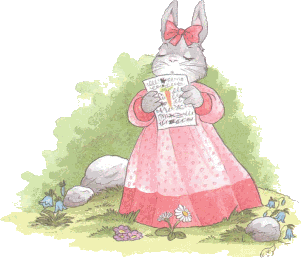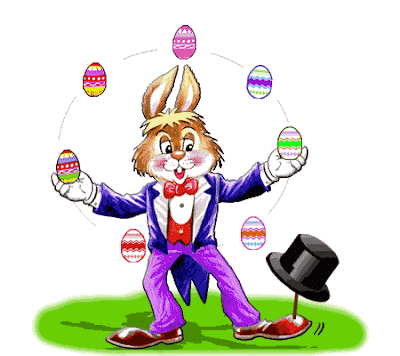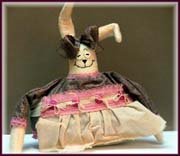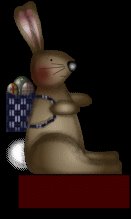The lure of the leprechaun! Sounds ominous - doesn't it?
What do I mean by this? Well, what is it about leprechauns that makes people love them? What is their hidden attraction - their lure?
Is it their devilish nature? The twinkle in their eyes? Their dimples? Their rosy cheeks? Their sheer luck?
Maybe it's their tenacity? Their studiousness? Their lively spirits?
Or, the fact that they have little "pots of gold?" Hidden treasures and mischievousness?
Or, is it because they wear green outfits and live in the forest? Or is it because they are cobblers by trade? What?
So, what's the lure? Why do people far and wide love the little men in the green suits? (Almost sound like martians, doesn't it?) And, did they always wear green suits?
It's definitely something for everyone loves leprechauns, especially crafters. Of course, then again, crafters love just about anything that they can create. And, crafters love other crafters and leprechauns are shoemakers which makes them crafters after all. That's "crafters logic" for ya.
So, really, why do crafters love to create them? Is it their red hair? Is it because they are inherently lucky and we all hope some of that their luck will rub off on us? Or, is it because we can appreciate all their hard work and hard efforts to make their creations - shoes? What is it about these little men in green suits that lures us?
So, (surprise, surprise) that got me to thinking about the history of the leprechaun. If you're a reader of my
Linda's Blog you had to see this coming a mile away. So, of course I had to find out - where did their legend begin?
According to
Wikipedia.com -
"In Irish mythology, a leprechaun (Modern Irish: leprechaun) is a type of male faerie said to inhabit the island of Ireland. They are a class of "faerie folk" associated in Irish mythology and folklore, as with all faeries, with the Tuatha Dé Danann and other quasi-historical races said to have inhabited Ireland before the arrival of the Celts."
As with many legends and folklore Irish legends are steeped in Celtic or Druid superstition and folklore that are handed down one generation to another.
Irish folklore, in particular is full of tales of fairies, leprechauns, banshees and other supernatural beings. Centuries ago it was believed that fairies lived in fairy forts which were large mounds of earth and that if you were to touch a fairy that would bring you bad luck.
Banshee's were female spirits who had long flowing hair and who wailed outside the home of someone whose was about to die. In rural Ireland to this day many people still believe in the banshee.
The most famous Irish fairy of all is, of course, the leprechaun. They are said to be aloof and unfriendly and busy themselves all day making shoes. They aren't easy to spot, but are industrious - stashing away all their money in hidden pots of gold at the end of the rainbow. According to legend, the only way to track a leprechaun is to follow the sound of a leprechaun hammering the shoes.
The image of the Leprechaun is that of a mischievous little old man who is 2' tall and a cobbler or shoemaker by trade. They are usually thought of to be rich, having buried many, many "pots of gold." According to legend, if you come across a leprechaun do not look away. If you do they will disappear. If you keep your eyes fixed on them they cannot escape or vanish. But, they are cunning and often can trick you into looking away.
In most of the folklore surrounding leprechauns they are characterized as harmless creatures who live alone or in remote locations. They like their solitude, but if engaged in conversation can be quite worldly. But, don't expect them to tell you where they've hidden their "pots of gold." They aren't likely to tell you that and will trick you before they do.
According to some legends leprechauns can be ill-mannered and cunning.
One interesting fact that surprised me was that in 1831 Samuel Lover wrote that the leprechaun wore a red coat, and Yeats in 1888 in his book entitled Fairy and Folk Tales of the Irish Peasantry describes the leprechaun as follows:
"He is something of a dandy, and dresses in a red coat with seven rows of buttons, seven buttons on each row, and wears a cocked-hat, upon whose pointed end he is wont in the north-eastern counties, according to McAnally, to spin like a top when the fit seizes him."
Now-a-days he wears a green coat or green frock and is synonymous with shamrocks and St. Patrick's Day. And all of that is synonymous with the Irish.
The Irish have celebrated St. Patricks Day for thousands of years. Surprisingly, the first St. Patrick's Day parade took place not in Ireland, but in the United States. Irish soldiers serving in the English military marched through New York City on March 17, 1762.
Over the next several decades Irish patriotism amongst American immigrants flourished and parades and "the celebrating of the green" became synonymous with Irish American pride.
Millions of Irish immigrants started pouring into to the U.S. during the Great Potato Famine of Ireland in 1845. They soon came to realize that their sheer numbers had political clout. As a result, their voting block, known as the "green machine," became an important swing vote for political hopefuls. To this day in the U.S. annual St. Patrick's Day parades and breakfasts are a must-attend event for seasoned politicians and political hopefuls. And, everything, including the food is "green" in color.
So, as with most legends and folklore the legends become history and the folklore becomes tradition. Soon it becomes hard to tell the legends and folklore from the facts. So, are the Irish lucky (i.e. the luck of the Irish) because of the leprechauns or the leprechauns lucky because they are "Irish?" We'll never know.
"The luck of the Irish" has been a saying tossed around for decades, along with images of tiny green men, green beer and, of course, the four-leaf clover. Some say that the saying "luck of the Irish" doesn't infer luck at all - but, instead, infers "bad luck!" We'll never know for sure. In any event, if you are lucky enough to be Irish or to see a "leprechaun" maybe you'll soon be finding your own "pot of gold." Maybe that even means that if you're a crafter who makes them "you will soon find your reward for all your hard work!"
For crafters, leprechauns come in all shapes, sizes, and materials, They are short, fat, skinny, tall, made of cloth, wood, ceramic, plastic, etc. They can be made out of just about anything, but for sure, they are all mischievous. Whatever it is that lures us to make them - they are a delight to make.
And, if you do make a leprechaun doll - watch out. They can be mischievous and cause quite the stir in your household.
Happy St. Patrick's Day.
 Everyone loves cute jokes. Here's a few Easter bunny jokes for the kids:
Everyone loves cute jokes. Here's a few Easter bunny jokes for the kids: What did the bunny want to do when he grew up?
What did the bunny want to do when he grew up? Why did the bunny bang his head on the piano?
Why did the bunny bang his head on the piano? Why does the Easter bunny have a shiny nose?
Why does the Easter bunny have a shiny nose? Is it true that bunnies have good eyesight?
Is it true that bunnies have good eyesight? Why is a bunny the luckiest animal in the world?
Why is a bunny the luckiest animal in the world? What do you call a bunny with a large brain?
What do you call a bunny with a large brain?



 Who doesn't love cute, cuddly bunnies. Crafters and doll makers certainly do. When a crafter thinks of Easter or Spring they generally think bunnies and eggs. They're become a staple of Easter and Spring.
Who doesn't love cute, cuddly bunnies. Crafters and doll makers certainly do. When a crafter thinks of Easter or Spring they generally think bunnies and eggs. They're become a staple of Easter and Spring. In the 18th century, German settlers brought the Easter Bunny tradition to America. The white Easter Bunny was called "Oschter Haws" or "Osterhase" and brought gifts of chocolate candy to good children. The children believed that if they were good the "Oschter Haws" would lay colorful eggs for them in a nest the children had built, which was usually a hat or bonnet that was placed in a secluded place like the barn or the garden.
In the 18th century, German settlers brought the Easter Bunny tradition to America. The white Easter Bunny was called "Oschter Haws" or "Osterhase" and brought gifts of chocolate candy to good children. The children believed that if they were good the "Oschter Haws" would lay colorful eggs for them in a nest the children had built, which was usually a hat or bonnet that was placed in a secluded place like the barn or the garden.

